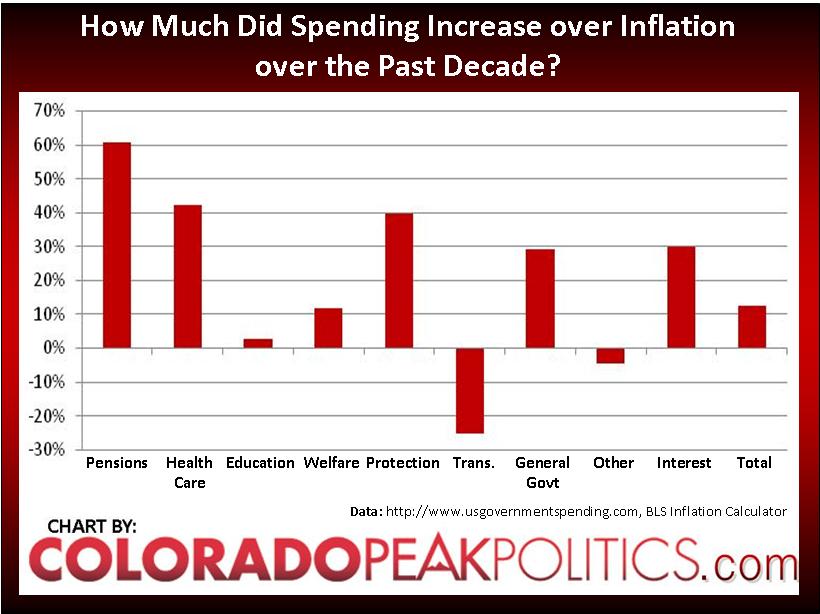With Colorado’s state and local government spending outpacing population growth and inflation, the question becomes where does all of Colorado’s revenue go? How is Colorado spending its money? Fortunately, USGovernmentsSpending.com has broken down Colorado’s state and local spending into categories for us. The categories include: pensions, health care, education, defense (the web site cites Colorado’s state and local spending in this category as zero), welfare, protection, transportation, general government, other spending, and interest. Here is a chart of Colorado’s 2012 spending.
Particularly intriguing was the category “other”, a catch-all for random spending, which includes everything from research to capital expenditures to cultural spending. We also examined spending in 2002, projected the spending per capita to 2012 based on inflation, and compared to determine which categories were on target with inflation and which had expanded most rapidly. The categories that had expanded far beyond expected were pensions (61% over inflation), health care (42%), protection (40%), general government (29%) and interest (30%).
It’s particularly interesting that Colorado appears to be spending so much more on interest payments. This likely due to an increased amount of debt in Colorado’s capital structure. Overall spending is up 13% after accounting for both population growth and inflation.
It’s interesting to note that while Democrats complain that lack of education spending is a problem, education spending is up 3%. It’s true that it hasn’t gone up as much as spending on police and firefighters, but it has kept up with inflation and general population growth over the past ten years.
Legislators must make spending priorities. If legislators have prioritized other areas for spending increases, it seems disingenuous to later complain about it and beg taxpayers for additional tax dollars to cover their inability to appropriately rank spending needs.



Trackbacks/Pingbacks